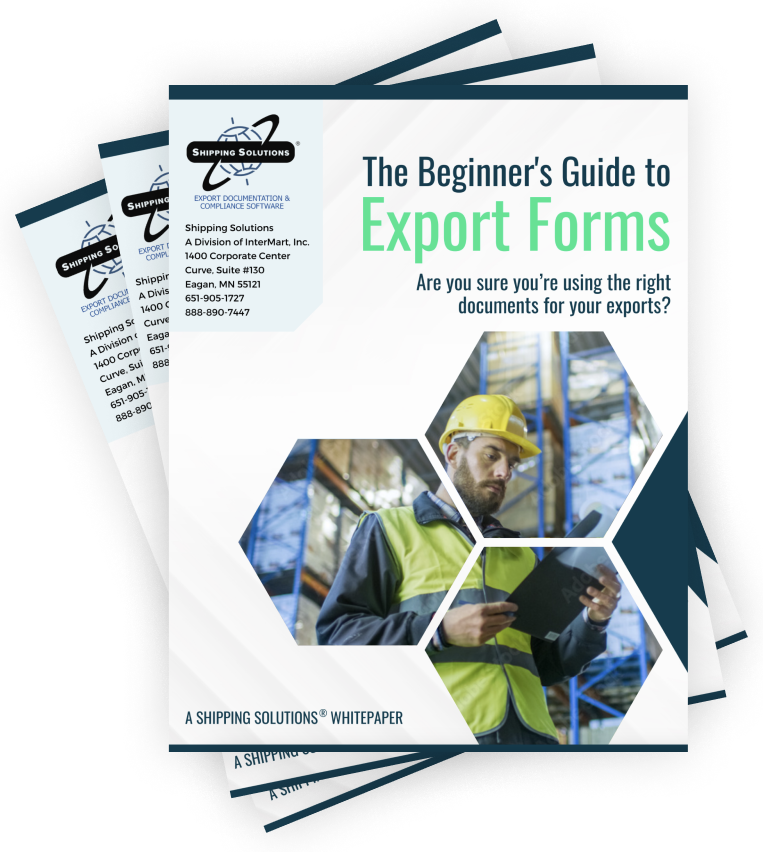The International Trade Blog Export Compliance
Exporting Samples: What You Need to Know
On: March 26, 2025 | By:  Mitch Kostoulakos |
4 min. read
Mitch Kostoulakos |
4 min. read
 Shipping product samples might seem straightforward—just hand them off to FedEx, UPS, DHL or the USPS (most samples are small) and move on. However, without proper due diligence, exporters can face customs delays, penalties or service issues.
Shipping product samples might seem straightforward—just hand them off to FedEx, UPS, DHL or the USPS (most samples are small) and move on. However, without proper due diligence, exporters can face customs delays, penalties or service issues.
While U.S. regulations for importing samples are well defined (read about them here), exporters sending samples abroad have no single set of regulations. Customs services in foreign countries have their own rules and procedures. So, allow me to propose some best practices for exporting samples while staying compliant.
How to Export Samples and Stay Compliant
Samples can be defined as “not suitable for its intended use,” such as models, unusable quantities or mutilated items. But most items exported as samples do not fit the above definition since they could be used for their intended purpose or entered into commerce.
The essential information needed to properly export samples are the three Ds: documentation, description and dollars.
Documentation
The commercial invoice (CI) is one of the essential documents in international trade, including shipments of samples. A proforma invoice—an offer of sale—is not sufficient for customs clearance. The CI description should clearly indicate that the sample is not for sale as well as the value.
Description
In his recent webinar, What You Need to Know About Exporting Samples and Repaired Goods, Robert Imbriani provided these excellent examples of descriptions to be used in exporting samples:
- True samples: These samples are NOT suitable for their intended use and could not be sold commercially. Suggested wording for the commercial invoice: “Sample, no commercial value. Value for customs purposes only USD $XXX.XX”
- Not a true sample: These samples COULD be suitable for intended use or sale. Suggested wording for the commercial invoice: “Sample, no charge. Value for customs purposes only $XXX.XX”
Watch Robert explain in detail how to handle commercial invoice descriptions and how to properly value samples (the value will be completely different depending on if you ship a true or not true sample):
Dollars
The valuation entered on the commercial invoice is critical. Customs services in the destination country want to know what is coming in and if it is dutiable. The values in the commercial invoice descriptions above must be accurate and consistent. Do not enter a random amount such as $1, $5 or $10 unless it is verifiable, and never less than $1. Exporters are cautioned not to allow their customers to determine the value. Exporters are always responsible for compliance. Since your sample is not a sale, enter 0 in the unit and billing columns of the commercial invoice. Finally, enter the USD designation if your valuation for customs purposes is in U.S. dollars, because the dollar sign ($) is used by a few other countries.
Because when we talk about samples, we're typically talking about low-value shipments, it's important to note that U.S. importers and exports should anticipate potential changes to de minimis rules this year that may change how low-value shipments are handled. These changes may or may not apply to samples, but it's important to stay updated on changes to the regulations.
Other Options
Samples can be exported under a Temporary Import Bond or an ATA Carnet. A carnet can be used more than once and is a good option if you are traveling from country-to-country with samples.
Learn more in our article, What Is an ATA Carnet?
Learn More about Exporting Samples
- Export Invoices: How to Properly Value Free Samples
- Repaired Goods: Import and Reexport
- Everything Has a Value—to U.S. Customs
Like what you read? Join thousands of exporters and importers who subscribe to Passages: The International Trade Blog. You'll get the latest news and tips for exporters and importers delivered right to your inbox.
This article was first published in August 2023 and has been updated to include current information, links and formatting.

About the Author: Mitch Kostoulakos
Mitch Kostoulakos is an independent logistics consultant and a Licensed Customs Broker (LCB). He was an award-winning International Executive with FedEx Services before launching Ad Hoc Logistics LLC, and previously held management positions in the LTL industry. Ad Hoc Logistics assists small and medium-sized firms with international logistics and customs issues. Mitch holds the CTL—Certified in Transportation and Logistics designation. His articles have been published in Transportation Journal. He was honored to be appointed to the Standing Committee on International Trade and Transportation of the Transportation Research Board beginning April 2020. TRB is a unit of the National Academies of Sciences, Engineering, and Medicine.


